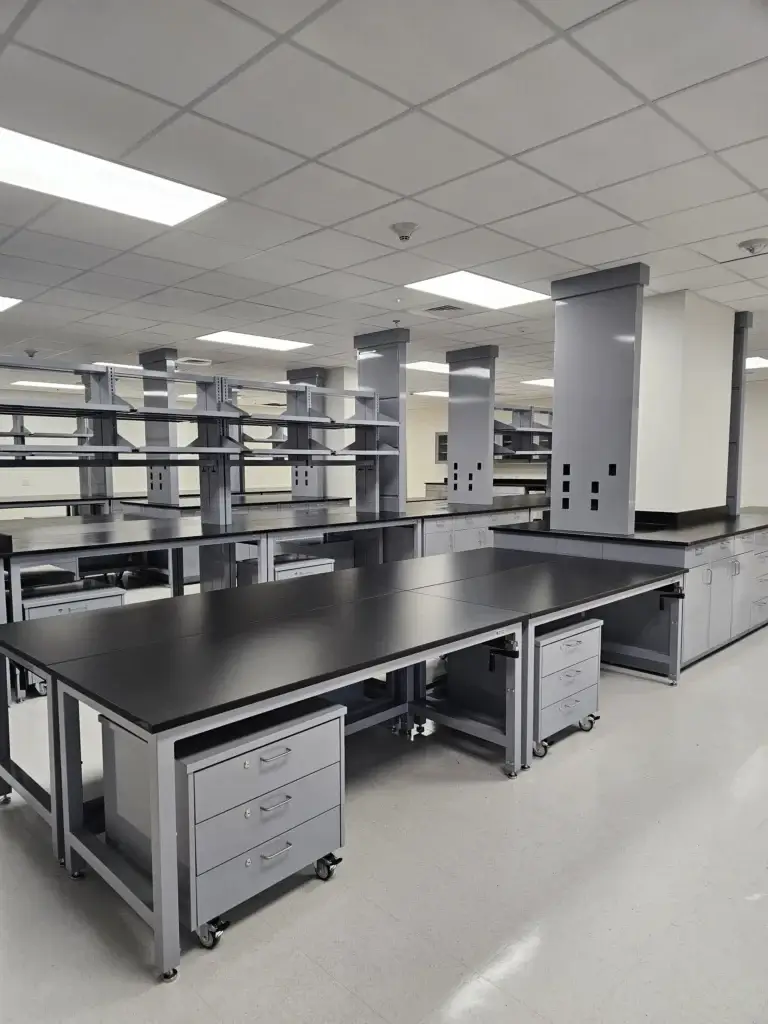
Lab efficiency is a serious matter for laboratories of all shapes and sizes. Operating high-performance modern labs demands more than scientific expertise.
Undetected operational challenges impact lab efficiency, productivity and research outcomes. In this blog, we will discuss three important hidden pains in laboratory operations and provide actionable recommendations to resolve and promote optimal efficiency to create thriving scientific environments.
1. Workflow Inefficiencies and Information Silos
The Problem: Modern labs have complex, multi-step processes. Consequently, inefficient workflows, characterized by manual tracking, duplicated efforts, and disparate data storage (such as spreadsheets and legacy software), create significant bottlenecks. Scientists waste valuable time locating information and managing processes instead of focusing on core research. The lack of a unified data view hinders informed decision-making and slows down project timelines.
The Solution: Having a centralized Laboratory Information Management System (LIMS) or Electronic Lab Notebook (ELN) in place. These systems offer a unified platform for sample tracking, data management, and workflow automation, effectively breaking down information silos. In addition, optimizing physical laboratory layouts to facilitate logical sample flow and communication also enhances lab efficiency.
- For more information about Laboratory Information Management System (LIMS), check out our blog below where we take a deeper dive into the system.
2. Ineffective Resource Management
The Problem: Beyond clear expenses, minor inefficiencies in resource management can significantly impact a lab’s bottom line and operational effectiveness. Specifically, this includes underutilized equipment sitting idle, inaccurate inventory management leading to expired reagents. Unfortunately, these issues represent a continuous, often unnoticed, drain on resources.
The Solution: Employ robust inventory management systems. By establishing regular equipment maintenance schedules and investing in energy-efficient lab equipment, you eliminate the Moreover, leveraging data analytics can help identify underutilized resources and optimize their allocation for maximum lab efficiency.
3. Unsupportive and Poorly Designed Labs
The Problem: Physical lab spaces affect the well-being and productivity of lab personnel more than you think. Consequently, prolonged work at ill-suited lab workstations, poorly organized storage, and a lack of visual stimulation can lead to physical discomfort, fatigue, and reduced job satisfaction. Thus, resulting in higher turnover and costly inefficiency of retaining staff.
The Solution: Invest in ergonomic and high-quality lab furniture, like height-adjustable lab tables or mobile stations. Optimize lab layouts for comfortable movement and incorporate biophilic design elements (natural light, plants) from the start. Promoting a sense of connection, these elements create supportive and engaging workspaces. Finally, prioritize proper organization and adequate storage solutions to reduce clutter and stress. Having laboratory storage cabinets of various sizes aids in preventing this issue, as it’s easy to become unorganized without enough storage.

These operational pains can’t be overlooked. By focusing on streamlining workflows through digital solutions, incorporating intelligent resource management strategies, and prioritizing the well-being of lab personnel through careful environmental design, lab efficiency will improve thus fostering a more productive and innovative scientific environment. Identifying and resolving these hidden challenges is not just good practice – it’s essential for thriving in an increasingly data-driven and efficiency-focused world. It’s best to start now, then later.
Next Step Towards a More Efficient Lab
If you have a laboratory where you need help with in creating an optimal layout, guidance on laboratory furniture selection, or something in between, give us a call. We’re ready to help!
And be sure to make our blog your go-to resource for expert advice and practical tips for when it comes to laboratories.
Check out additional lab design guides below:


